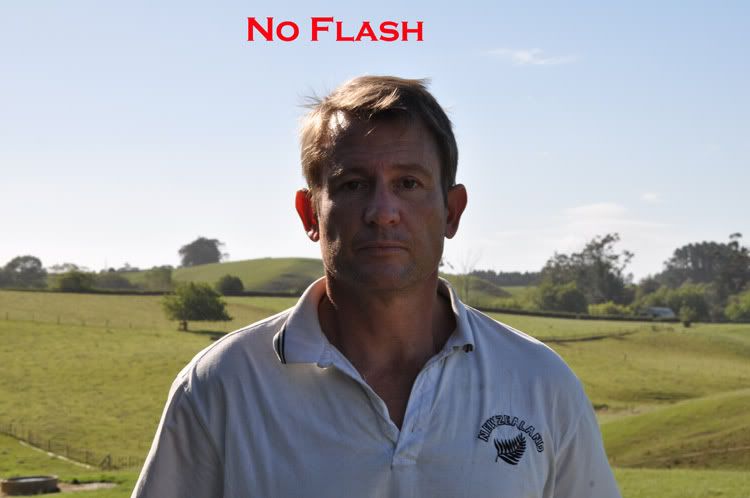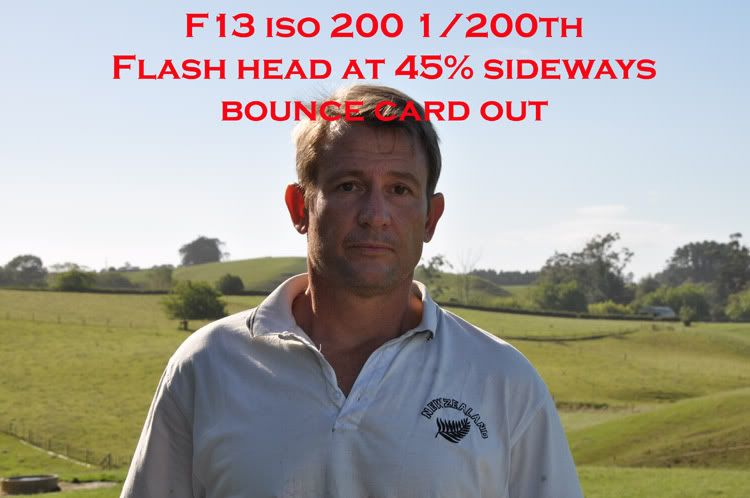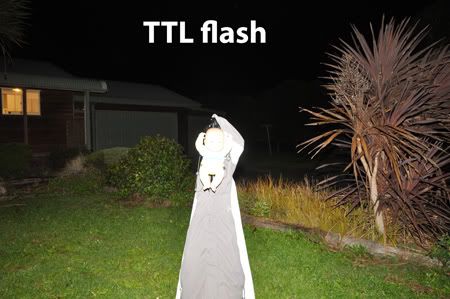Why do people write photography books ? For the money , not because they want to help people !
{Please note : I am not condemning entire books - just warning about information that could be misleading to a beginner - the rest of the information in the books mentioned is useful ! }
Many of these people are very knowledgeable about photography but are not necessarily 100% right in all their statements .
As I read through some of the more popular books I see mistakes that could greatly mislead beginners so I thought I would list them here for the benefit of beginners trying to find their way through a sea of [ sometimes incorrect] information .
It's confusing enough as a beginner without reading misleading statements that could further confuse your learning process !
I am busy with this book and on page 18 the author makes the statement about "BL" flash that in this mode " the flash is trying to make the foreground and background roughly equivalent exposure zones " .... that's close to what the manual says which is also ambiguous . Then he goes on to state that if the background is dark it will blow the subject trying to light the background as well . Nothing could be further from the truth ! In my blog on TTL/BL I explain my tests and how it really works .
{5/03/2010 :
I've decided to expand on this particular subject since many are questioning my basis for stating that the book's description is totally wrong . The problem lies primarily with Nikon who haven't explained things properly to us .
Page 37 of the SB800 manual describes TTL/BL flash in a very ambiguous way [ I'll go so far as to say the manual is wrong as well in this respect ] ... with regard to TTL/BL "Automatic balanced Fill Flash " it states " The flash output is adjusted for a well balanced exposure of the main subject and background " .... work that one out without getting everyone confused . I started doing tests with TTL/BL flash almost a year ago on Nikoncafe . After many test images [ you can see them on my photobucket album in the "flash" album , most have text on them ] I concluded that TTL/BL only cares about correct exposure on the subject and is far more accurate than TTL flash .
To stick to the subject at hand with TTL/BL it would be more accurate to read : " The flash output level is automatically adjusted for a well balanced exposure of the main subject taking the 'background' or ambient lighting already on it into account " .
As they say "a picture speaks a thousand words "
The author stated that the flash would "arm the photon warhead " and " obliterate the darkness " .. some simple tests will confirm the inaccuracy of this statement .
To digress slightly TTL flash does this when the subject is smaller than the metering area in the centre of the frame ...
Now we go to TTL/BL , due to the fact that it can 'map out' its subject using the matrix metering pattern - and has the advantage of distance info - it is much more accurate :
So : Did TTL/BL try to obliterate the darkness ? No , it concentrated on the subject . If anyone still doesn't believe me than all you have to do is try it out for yourself and you will see that the statement that TTL/BL will try to light the background is totally wrong .
So , Never base your statements on something you have read in a manual or heard form someone else - do your own tests and you will learn so much more .... and never make statements in a book based on what you think the manual means - it will get back to you in the end ! }
The incorrect statement is due to a rather ambiguous statement in the Nikon manual that has been badly misinterpreted . In reality , the wireless CLS that the author praises so highly uses the same metering mode as TTL/BL ! BL mode will try to get perfect exposure on the subject " and take the ambient[ background] lighting on the subject into account " - that's the balancing part of it .
On to page 258 " I want the light source to be at least twice as far away as I had it , so that's gonna mean twice the power " ..... this is totally wrong , due to the inverse square law twice the distance means 4X the power !
This may have been a genuine mistake overlooked by a hasty review before publishing - but it's going to have a lot of beginners believing the wrong thing .
The other book I was reading recently ....
.... has a suggestion on page 41 about using fill flash outdoors .
I have seriously never seen anything so pointless !
How much of the light in this image do you think is going to go sideways .... maybe 1% of 5% ? You'll have your flash firing at full power every shot just to put catch-lights in the subjects eyes , and those catch-lights will be "L"- shaped .
No wonder we have global warming and professionals complain about burning out flash heads !
Please note : I agree that fill flash should be used outdoors ! You will do well to follow the advice to use it .... BUT : wasting flash into the air makes no sense when you can simply dial back direct flash for the same results and use less than 1/100th of the power .
This weekend I will do some tests to verify the amount of flash that hits the subject with the bounce card .
With outdoor flash you will have the flash dialed down , your working distance will already be greatly reduced and you will hardly notice direct flash at -3 compensation when used as fill flash .Why fire the flash at the moon and only get 0.05% of the flash power hitting the subject ? That's one way to fry a flash and waste battery power .
On to the tests :

To give him the benefit of the doubt I stood 6 feet away , he mentioned 8-10 feet .

Just to make sure we were getting the full potential of the flash I set the flash to manual and full power ....

Pretty dismal isn't it [ not the subject! ]
Then I went to TTL/BL -1 direct flash ...

I won't show the picture of my face 2 feet from the camera but when I put the camera in manual at those settings at 1/128th power it tells me I have 0.6m working distance .... with direct flash that is .
At 0.6m [ 2 feet ] with the flash in the suggested position there is still not enough flash at full power .... this suggests that we are getting less than 1/128th of the power from the sideways light using the suggested setup .
You will use more than 150 X the flash power and flatten your batteries more than 150 X faster using this ' technique ' .
I rest my case ... it's a bad suggestion regardless of who made it .
When I buy a camera I expect everything on it to work .
I expect everything in the manual to be correct .
And when I pay for a book of photography knowledge I expect it to be correct .
If anyone has anything to add to this page please let me know !








4 comments:
People who use flash outdoors with a bounce card or a diffuser really don't have a clue what they're talking about. First, they're not professionals and second, they should never consider - EVER - writing a book, no matter how they try to justify it's use. I'm with you on this one!
As someone pointed out to me on a forum they probably just want to add something extra to their book to sell more copies :)
So far i've seen and read, you'r the one who's explained it very well and true. I've read the books from joe mcnally, scott kellby. But u've made me understand the ttl-bl flash.
Thank you from bottom of my heart.
Thanks Urgyen , good to know someone is getting something out of it .
Post a Comment